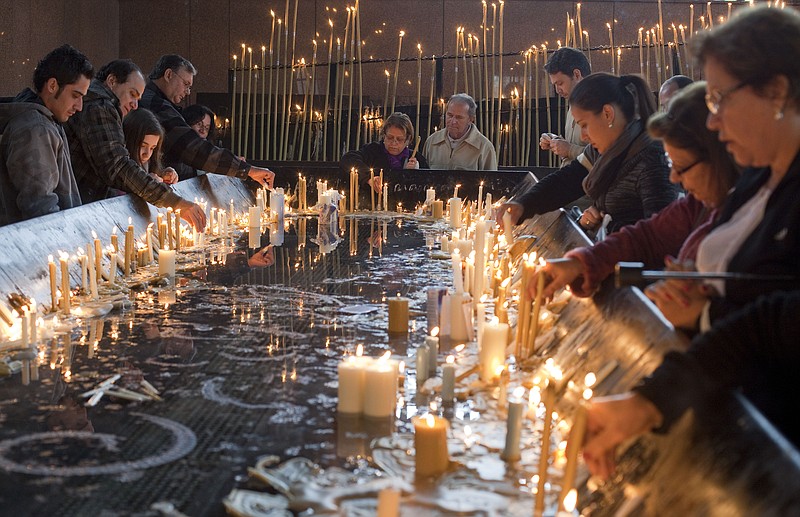APARECIDA, Brazil (AP) - The image of Brazil's patron saint, the dark-skinned Virgin of Aparecida, emblazons bumper stickers, presides over shops and dangles from gold chains around women's necks all over this continent-sized country. Replicas of the thin clay statue hang in places of pride on the walls of both the most sumptuous of mansions and the humblest of shacks.
On Wednesday, Pope Francis, the first pontiff from the Americas, will fly over farmland and sugar cane fields to visit the mammoth basilica that holds the statue of this particular Brazilian Mary. On the pontiff's first day in Brazil, it's also where police found a homemade explosive in a nearby public restroom. It didn't appear to have been aimed at the pope.
The Vatican says the Argentine pontiff personally insisted the trip be added to his agenda. Millions of grassroots Catholics who worship Aparecida's image will be watching.
Rio de Janeiro taxicab driver Wellington Damiao is one of those who's placed his faith in the Virgin. He keeps an inches-tall plastic figurine of Aparecida on his cracked dashboard as he rolls around the city's streets.
"My mother was a devotee, I've been one all my life and now I'm teaching it to my children," Damiao said. "I've never asked anything of her because I believe we have to give thanks, not just ask for things all the time."
Revered across the width and breadth of Brazil, Aparecida's appeal has transcended the church's legions of faithful in the world's biggest Catholic country. She's been syncretized with the goddess of love and maternity in a Brazilian religion with roots in west Africa, and her dark complexion has endeared her to blacks and those with a mix of black and white heritage, both of whom make up about half of Brazil's population.
"Her face is the face of the Brazilian people," said Father Jose Arnaldo Juliano dos Santos, a chaplain and researcher in Sao Paulo.
Standing atop a crescent moon adorned with an angel, Aparecida lifts her hands to her chest in prayer, a slight smile on her upturned lips and several flowers in her hair. Her gown and cloak fall in elaborate folds, and she wears a strand of pearls around her neck. The diminutive statue stands just 15 inches tall, though the gold crown and blue velvet cape she now wears give her a bit of added height and bulk.
Reverence for the figure of the Virgin Mary, known as Marian devotion, is common in much of the Christian world, popular in the Greek and Russian Orthodox churches as well as in Catholic southern Europe, where major shrines such as Lourdes in France and Fatima in Portugal are dedicated to the Virgin.
Marian devotion also runs particularly deep in Latin America. The Virgin of Guadalupe, another dark-complexioned Mary, is the patron saint of Mexico, and the Virgin of Charity of Cobre, who's often associated with Aparecida, is widely revered in Communist Cuba.
According to church lore, the Virgin of Aparecida surfaced on Oct. 16, 1717, as the town of Guaratingueta, an inland hamlet about halfway between the cities of Sao Paulo and Rio de Janeiro, prepared for a visit by Sao Paulo state's governor. A fleet of fishermen plied the nearby Paraiba River to catch fish for a banquet in the official's honor, but after 12 fruitless hours in the normally well-stocked river, all but three of the fishermen gave up.
As night fell, they cast their nets one last time, dredging up only the terracotta statue of a headless female figure, her hands pressed together in prayer. Surprised, they cast the net once more, bringing up a head that fit perfectly on the body.
They wrapped the pieces in their shirts and cast the nets once more, this time bringing up hundreds of fish.
One of the fishermen gave the statue to his wife, who stuck the two pieces together with wax and placed the figure in the family shrine, where it would remain for some 15 years.
A series of miracles was soon attributed to the Virgin, including the freeing of a runaway slave named Zacarias. After he was caught, Zacarias was being marched back to his owner in shackles when he passed by the little Aparecida shrine. Legend has it he prayed to the Virgin to intercede, and the shackles fell away. Upon hearing the story, Zacarias' owner immediately freed him.
As news of the miracles spread throughout Brazil, the number of pilgrims grew exponentially, and a series of ever-larger churches were built to house her, culminating with the sprawling domed basilica that was begun in 1955 and holds up to 45,000 worshippers in the city named after the Virgin.
Her saint's day, Oct. 12, is now a national holiday in Brazil, and tens of thousands of pilgrims annually mark the day by trekking to the Sanctuary of Aparecida

